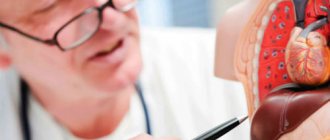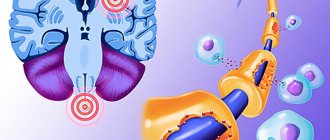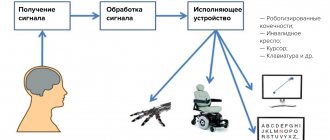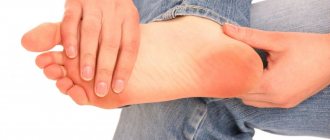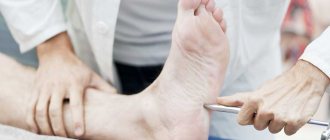Parkinsonism, or Parkinson's disease, is a degenerative disease of the central nervous system, which in most cases results in disability and death.
Parkinson's disease is defined by four characteristic features that make up the tetralogy of parkinsonism:
- shaking (tremor) of the head, limbs,
- muscle stiffness (stiffness),
- limited movement (hypokinesia),
- changes in gait, posture (postural disorders).
Parkinsonism is a common neurological disease, affecting 120–180 people out of 100 thousand, and the disease has a pronounced age dependence.
Our expert in this field:
Lashch Natalia Yurievna
Neurologist of the highest category, candidate of medical sciences, associate professor. Laureate of the Moscow City Prize in the field of medicine.
Call the doctor Reviews about the doctor
Causes
There are two types of Parkinson's disease. The first is true parkinsonism, it accounts for up to 80% of cases of the disease.
The second is parkinsonism syndrome, which accompanies traumatic brain injuries, encephalitis, stroke, and brain tumors.
The exact causes of true parkinsonism, or Parkinson's disease, are unknown.
But several facts have been established:
the disease develops mainly in old age (after 60 years),
degenerative changes begin with the irreversible process of death of neurons in the brain stem,
the development of symptoms of the disease is associated with a lack of dopamine, a neurotransmitter on which signal transmission in interneuron connections depends,
there is a genetic predisposition.
In approximately 15% of cases, Parkinson's disease occurs against the background of a negative family history (presence of the disease in close relatives) and is inherited.
Some factors may influence the development of the disease:
- intoxication (chronic poisoning with chemical toxins in hazardous industries, unfavorable environment, exposure to pesticides, manganese),
- infectious lesions of the central nervous system (encephalitis, etc.),
- traumatic brain injuries,
- impaired functioning of the kidneys and liver.
Symptoms
The development of Parkinson's disease is directly related to a lack of dopamine - this is one of the neurotransmitters that ensure the transmission of signals in interneuron connections. That is, the conductivity of nerve fibers.
A lack of dopamine leads to the fact that signals in interneuron connections “freeze”, the speed of their transmission sharply decreases, this leads to impaired motor functions and mental abilities.
This is why Parkinson's disease is always accompanied by both motor and mental impairments.
The first signs of the disease are rarely a cause for concern - stiffness of movement in the right half of the body, twitching (trembling) of the hands, oily skin and hair, frequent depression, constipation.
Over time, pronounced tremor occurs - trembling of the arm, leg, and then the head, involuntary movements of the fingers.
At an early stage, the tremor affects only one arm (leg), and then spreads to the second. Tremors always begin in the limbs, and head tremor joins with the development of the disease.
The person’s movements become slow, the gait is shuffling. He moves in small steps, before turning around, marking time.
The back is bent in an arch, the head is lowered, the arms and legs are bent, and a characteristic stoop is formed - the “petitioner pose.”
Facial expressions are becoming increasingly impoverished. The face becomes motionless and loses expression. The impression arises that the person does not react to anything.
The muscles become less and less mobile, rigid, it becomes difficult for a person to make movements, their volume is increasingly limited. He cannot fasten buttons, tie shoelaces, shave, brush his teeth, and over time he completely loses the ability to take care of himself in everyday life.
Speech changes - it becomes unintelligible, quiet, monotonous.
Over time, the clinical picture is supplemented with new symptoms:
- dementia develops
- impotence occurs,
- urination increases,
- swallowing is impaired,
- the skin becomes dry,
- sweating increases,
- sense of smell worsens,
- sleep is disturbed
- blood pressure decreases,
- salivation increases.
Forms of the disease
The forms of Parkinson's disease are determined depending on which of the symptoms is most severe.
1. Trembling form - trembling (tremor) predominates in the arm, leg or both arms, legs, head, and the most pronounced tremor is at rest. With movement, it may weaken or even disappear.
2. Rigid form – characterized by stiffness in the muscles, especially when starting to move, and limited mobility.
3. Akinetic form - characterized by slowness of movements, impoverishment or complete absence of facial expressions.
Along with these three main forms, mixed forms are distinguished: rigid-tremorous, tremulous-rigid, akinetic-rigid, etc.
Stages
There are five main stages in the development of Parkinson's disease.
At stage 1, trembling appears in only one arm or leg. Usually the disease manifests itself as trembling of the fingers of the right hand.
At stage 2, trembling (tremor) spreads to the second arm (leg). Sleep is disturbed, appetite worsens, excessive salivation occurs, and the chin begins to twitch.
At stage 3, balance is disturbed, body posture changes, the gait becomes shuffling and slow, but the person can still perform ordinary everyday movements and take care of himself. The tremor becomes more and more intensified, speech is impaired, the face becomes emotionless.
At stage 4, changes in gait and body posture become more pronounced. While walking, a person may fall. He can still walk, but can no longer perform simple actions or take care of himself (fasten buttons, hold a spoon). Depression develops.
At stage 5, a person loses the ability to move (walk, stand, sit), coordination of movements is lost. Speech becomes illegible, slurred, swallowing and urination are impaired. Without outside help, his life becomes impossible.
The progression of the disease can be slow, moderate or rapid. In the first case, the transition from one stage to another occurs within five years or longer, in the second case - within 3 - 5 years, in the third case - within two years.
Physiotherapy
An important element in the fight against Parkinson's disease is therapeutic exercises. It is useful for maintaining muscle tone, developing joints, improving coordination of movements, and strengthening ligaments.
Exercises for the shoulder girdle, neck muscles, torso, arms, legs are especially useful:
- bending, turning the head to the right and left (the main principle is that the exercises are performed very slowly);
- raising, spreading the shoulders;
- circular movements in the shoulder joints;
- straightening the legs at the knees (alternately);
- flexion of toes, hands;
- straightening the back, bending the torso.
Facial gymnastics is also shown. Doctors recommend that patients start every day with the following exercises:
- Pull out your tongue and move it in different directions.
- Raise and lower eyebrows.
- Purse your lips.
At first glance, the exercises are simple but effective. If exercises are done regularly, then a number of symptoms, especially those affecting muscles and joints, are significantly less disturbing.
In addition to classical exercise therapy for Parkinson's disease, dancing is useful. Argentine tango provides a particularly good effect. After all, when performing this dance, different muscle groups and joints are maximally involved. With severe progression of the disease, this method of combating the disease is difficult to use, but at the 1st and 2nd stages of the disease, its use is very advisable.
Diagnostics
At the initial appointment, the doctor at the Medica24 International Clinic asks the patient (or his relatives) about the symptoms, the time of their appearance, the dynamics of development, as well as the presence of diseases in the family. This is called taking a personal and family history.
After this, the doctor conducts an external examination, paying attention to violations of coordination, movements, body posture, and uses several tests to assess the degree of rigidity, akinesia (for example, a test for clenching and unclenching a fist, etc.).
When diagnosing, the doctor must differentiate Parkinson's disease from many neurological disorders by the presence of strokes, antipsychotic therapy, the presence of long-term remissions (Parkinson's disease develops without remissions), traumatic brain injuries, a history of encephalitis and a number of other signs.
After establishing a preliminary diagnosis, if Parkinson's disease is suspected, the doctor will refer the patient for additional examinations.
1. Rheoencephalography.
This is a research method using a weak high-frequency electric current that shows the nature of blood circulation in the brain.
2. Electroencephalography.
EEG helps to assess the general and local functional activity of the brain and identify pathological foci.
3. Computed tomography.
A CT scan of the brain gives a detailed picture of blood circulation, the condition of the nervous tissues of the brain, and helps to detect pathological areas and tumors.
4. Magnetic resonance imaging.
MRI of the brain is performed using a magnetic field and, unlike CT, does not expose the brain to radiation. Therefore, this type of examination can be carried out many times. MRI helps to examine in detail the state of the nerve tissue of the brain and detect areas of neuronal damage.
Along with these basic diagnostic methods, laboratory tests are used, and, if necessary, other high-tech, modern examinations, which allow her not only to clarify the diagnosis, but also to determine the best treatment tactics.
Treatment
The main drug treatment for Parkinson's disease is levodopa.
This is a symptomatic remedy that replenishes the lack of dopamine and thus eliminates the main cause of the symptoms of the disease - hypokinesia, tremor, rigidity.
To stimulate the synthesis of dopamine in the brain and increase its level in interneuron synapses, selective MAO-B inhibitors (selegiline), amantadine, piribedil, and pramipexole are used.
In complex therapy of the disease the following are also used:
- antipsychotics (to reduce mental symptoms),
- antispasmodics,
- antidepressants, tranquilizers (to eliminate insomnia, pain),
- akatinol, vinpocetine and other drugs to improve memory and speech.
Treatment of Parkinson's disease in the later stages is complicated by the fact that the effect of levodopa is reduced and side effects increase.
All this requires constant medical supervision and timely adjustment of drug therapy, prescription of additional drugs, and dosage changes.
At the last stage of the disease, the patient needs professional medical care, which can be fully provided only in a hospital setting.
Medical care and symptomatic therapy at the Medica24 International Clinic help improve the quality of life and increase its duration, and slow down the development of Parkinson’s disease at a late stage.
We will call you back
Message sent!
expect a call, we will contact you shortly
Nutrition and diet
A proper diet helps maintain the desired balance and consolidate the effect of drug and neurosurgical treatment.
A special diet for Parkinson's disease is not required, but the diet of a person suffering from Parkinson's disease must include fermented milk products, grains, herbs, vegetables, fruits, and grains. They should be the main part of the diet.
At the same time, we must not forget about fish and poultry. Animal protein is essential. Vegetarianism is not recommended for Parkinson's disease. At the same time, doctors (due to the specifics of the disease) recommend leaving meat dishes for dinner.
The food intake schedule must be clearly coordinated with the medication intake schedule. Many medications prescribed for Parkinson's disease can only be taken two hours after a meal.
It is important to observe the drinking regime. It is advisable to adhere to the following scheme: at least 7 glasses of water per day. At the same time, a third of the water you drink should come at meals.
Forecast
If left untreated, Parkinson's disease has a negative prognosis. During the first 5 years, 25% of patients experience disability and/or death, and within 7–10 years this figure exceeds 50%.
This is why early diagnosis and treatment of Parkinson's disease is so important. But even at a late stage of the disease, modern methods used in the international clinic Medica24 help to significantly improve a person’s condition.
The material was prepared by Natalya Yuryevna, a neurologist at the International Clinic Medica24, Candidate of Medical Sciences Lasch.
Disability groups for Parkinson's disease
The disability group is established based on the results of a medical examination, during which the basic systems of the body are assessed, and the ability to care for oneself independently, communicate with people, move, and engage in work activities is tested.
There are 3 groups of disabilities, each of which has its own characteristics of the patient’s behavior:
- Group 1 – the patient is unable to care for himself or move independently. Labor activity is contraindicated and bed rest is prescribed.
- Group 2 – the person is partially able to take care of himself, symptoms of bilateral instability appear. Labor activity is limited.
- Group 3 – a person is fully capable of independent care. Labor activity is reduced.


